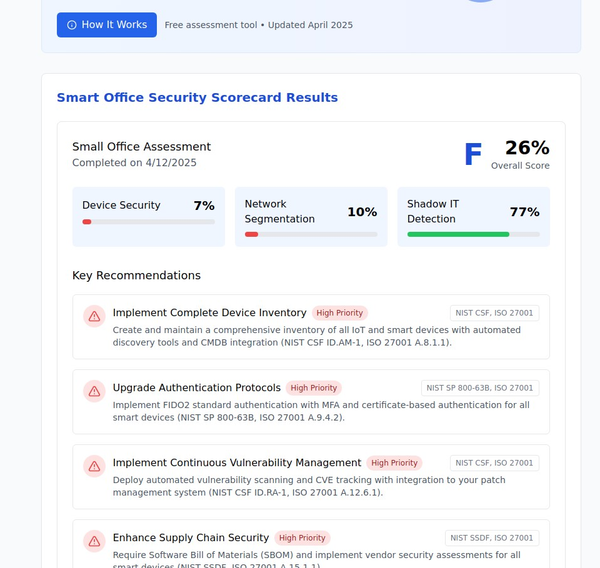Emerging IoT Threats in 2024: A Comprehensive Update

The rapid adoption of IoT devices continues to transform various sectors, from healthcare to manufacturing. However, this surge in connectivity also presents significant security challenges. Here, we explore some of the latest and most critical IoT security threats emerging in 2024, and provide insights on how to mitigate them.

1. Botnets and DDoS Attacks
Pandoraspear Botnet: One of the significant threats in 2024 is the 'Pandoraspear' botnet, which has infected millions of smart TVs and set-top boxes. This botnet leverages compromised devices to launch Distributed Denial of Service (DDoS) attacks, severely impacting network performance and accessibility. The infection mechanism primarily targets Android-based smart TVs, exploiting users who visit dubious streaming sites.

Mitigation:
- Ensure all IoT devices have the latest security updates and patches.
- Implement network segmentation to isolate vulnerable devices.
- Use DDoS protection services to mitigate attack impacts.
2. Legacy Vulnerabilities
A report by Asimily highlights that many IoT devices are still susceptible to outdated vulnerabilities, some of which are over three years old. This persistent issue is particularly prevalent in routers, which constitute 75% of infected IoT devices. Other vulnerable devices include security cameras, digital signage systems, and medical devices.
Mitigation:
- Regularly update all device firmware and software.
- Replace or upgrade devices that no longer receive security updates from manufacturers.
- Conduct periodic vulnerability assessments to identify and address weaknesses.
3. Ransomware Targeting IoT
Ransomware attacks have evolved to target IoT devices, posing severe risks to critical infrastructure sectors such as healthcare and manufacturing. Attackers can lock users out of essential devices, demanding ransom for restoring access.
Mitigation:
- Implement robust backup solutions and regularly test recovery processes.
- Educate employees on recognizing phishing attempts, which are common vectors for ransomware.
- Deploy endpoint security solutions that can detect and block ransomware before it infiltrates the network.
4. Supply Chain Attacks
Supply chain vulnerabilities are another growing concern. IoT devices often pass through multiple stages of production and distribution, increasing the risk of tampering at any point along the chain. These vulnerabilities can be exploited to introduce malicious code or hardware into otherwise secure devices.
Mitigation:
- Conduct thorough security assessments of suppliers and manufacturers.
- Implement secure boot processes to verify device integrity at startup.
- Use blockchain technology for transparent and tamper-proof supply chain tracking.
5. AI and Machine Learning Exploits
As IoT devices increasingly integrate AI and machine learning capabilities, they become new targets for cyber attacks. Adversarial machine learning, where attackers input misleading data to trick AI systems, is a notable threat.
Mitigation:
- Develop AI models with adversarial training to better handle malicious inputs.
- Implement continuous monitoring of AI system performance to detect anomalies.
- Use multi-layered security approaches that include both traditional and AI-specific defenses.
Case Studies of Recent IoT Attacks
Wyze Camera Glitch: In early 2024, a glitch in Wyze's home security cameras allowed approximately 13,000 users to view footage from other users' cameras. This incident highlights the risks associated with cloud-based IoT devices and underscores the importance of robust access control and data isolation mechanisms.
APT28 Botnet Disruption: The US government disrupted a botnet used by the Russia-linked APT28 threat group. This botnet was involved in spear-phishing and credential harvesting campaigns targeting government and corporate organizations. The incident emphasizes the ongoing threat posed by nation-state actors leveraging IoT vulnerabilities.
Mitigation:
- For cloud-based IoT devices, ensure strong encryption of data both at rest and in transit.
- Implement stringent access control measures and regular audits to detect unauthorized access.
- Use advanced threat detection systems to identify and respond to sophisticated attacks.
Conclusion
The evolving landscape of IoT devices brings with it a host of emerging security threats. Staying ahead of these threats requires a proactive approach to security, continuous monitoring, and the implementation of comprehensive risk management strategies. By understanding the latest IoT security threats and adopting robust mitigation measures, individuals and organizations can protect their devices and data in this increasingly connected world.






